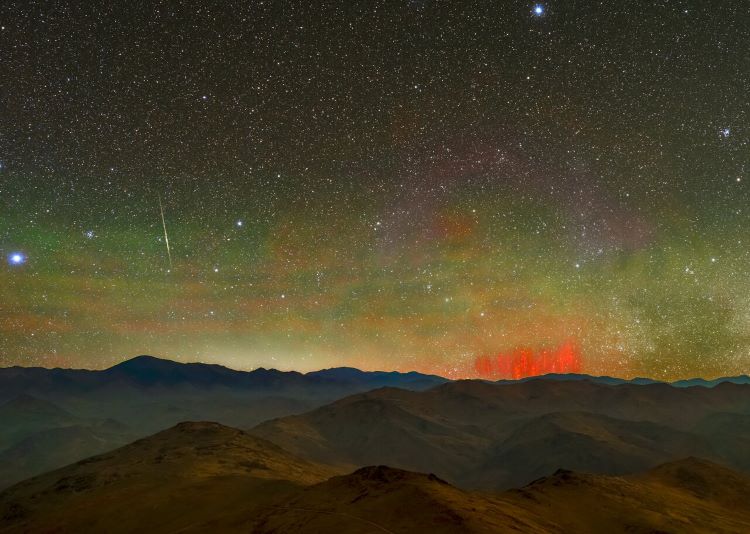Planet Earth is full of some truly awe-inspiring spectacles, but few are as intriguing as a sprite, which are officially known as a Transient Luminous Event (TLE) and consist of large-scale electric discharges that shoot upwards while occurring above the cloud tops in the Earth’s mesosphere at approximate altitudes of 50-90 km (31-56 mi). In October 2023, European Space Agency (ESA) astronaut, Dr. Andreas Mogensen, who is currently onboard the International Space Station (ISS) as Commander of the Expedition 70 mission, took an incredible image of a red sprite with the Davis camera as part of the Thor-Davis experiment and his Huginn mission.
Sprites have been observed from the ground and aircraft. However, the preferred observation method is from outer space due to the sprites occurring above the cloud tops and the low altitude of the ISS offering pristine views of these unique lightning features. While they are observed above cloud tops, they are hypothesized to originate from normal lightning near the Earth’s surface and act as a “balancing mechanism” used by the Earth’s atmosphere to distribute vertical electrical charges.
Since red sprites are essentially lightning strikes and visible for only a fraction of a second, specialized event-based cameras such as the Davis camera are required to precisely capture them. The Davis camera contrasts with a normal camera in that it does not take direct photographs, but instead creates images by sensing light and contract variances. Through this, the Davis camera capabilities are analogous to a normal camera taking 100,000 images per second.

“These images taken by Andreas are fantastic,” said Dr. Olivier Chanrion, who is a senior researcher at Danish Technical University (DTU) Space and lead scientist for this experiment. “The Davis camera works well and gives us the high temporal resolution necessary to capture the quick processes in the lightning.”
The Thor-Davis experiment builds off the Thor experiment also conducted by Dr. Mogensen during his first mission to the ISS in 2015. During that experiment, Dr. Mogensen shot a 160-second video displaying 245 blue jets, which are another type of lightning event that shoots up towards space, with results from those findings being published in a 2016 study in Geophysical Research Letters.
The earliest recorded report of sprites—though they weren’t called that right away—occurred in November 1885 from the R.M.S. Moselle as it was leaving port in Jamacia with the sprites then being described as a “meteorological phenomenon” while “sometimes tinged with prismatic hues, while intermittently would shoot vertically upwards continuous darts of light displaying prismatic colours in which the contemporary tints, crimson and green, orange and blue, predominated.”
It took more than 100 years for the first photographic evidence of sprites to happen, when a team of scientists from the University of Minnesota accidentally imaged electrical discharges using a low-light-level television camera in 1989, with their findings later being published in Science the following year. It wasn’t until a 1995 study published in Geophysical Research Letters that these electrical charges were officially dubbed “sprites”. In the last several decades, sprites have been observed from all continents except for Antarctica, along with being observed from the ground, aircraft, and even outer space.

What new discoveries about sprites will researchers make in the coming years and decades? Only time will tell, and this is why we science!
As always, keep doing science & keep looking up!


Sprites are so cool! And they often have structures which, to me anyway, look like Faraday cages, but upside down. The one at the beginning of the article looks kinda like an upside-down Eiffel Tower, which is also a Faraday cagelike structure, to direct lightning strikes around the outside and into the ground.